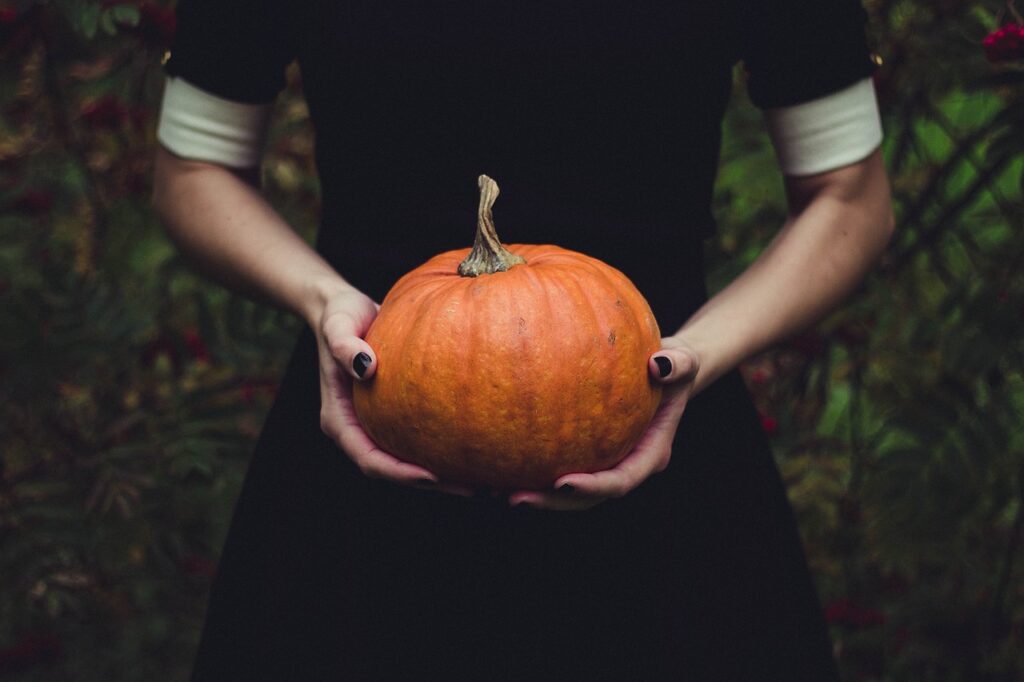As Halloween festivities come to a close, the sight of decorative pumpkins adorning our doorsteps and homes is a common and cheerful sight. But what happens to these vibrant gourds once the spooky season is over? Unfortunately, many end up as waste, contributing to the growing issue of food and organic waste in landfills. In this article, we explore the environmental problem posed by pumpkin waste, offer eco-conscious alternatives for disposing of painted or carved pumpkins, and provide creative ideas for making the most of these versatile fruits after Halloween.
The Pumpkin Waste Problem
Pumpkins, while emblematic of autumn and Halloween, become a concerning source of waste once the holiday passes. The Office of Energy Efficiency and Renewable Energy estimated that the USA produces a whopping 1.5 billion pounds of usable pumpkins each year however only 20% of that goes to food production with the majority going to no other purpose than Halloween decorations and ultimately ending up as food waste. When pumpkins end up in landfills, they decompose and produce methane, a potent greenhouse gas that contributes to climate change. Moreover, the resources, including water, energy, and land, used to grow these pumpkins go to waste, exacerbating the environmental impact.
What to Do With Pumpkins After Halloween
Pumpkin Puree: If you have uncarved, unspoiled pumpkins, consider making homemade pumpkin puree. It’s perfect for pies, soups, and baked goods. Simply cut the pumpkin into chunks, roast until soft, and blend into a smooth puree. The best part is that pumpkin puree can be frozen for an extended period when stored properly. When frozen at 0°F (-18°C) or below, it can maintain its quality for about 10 to 12 months.
Pumpkin Seeds: Roasted pumpkin seeds are a delicious and healthy snack. Clean the seeds, toss them with your favorite seasonings, and bake until crispy.
Pumpkin Soup: Whip up a hearty pumpkin soup using the flesh of your Halloween pumpkin. It’s a warming dish for the autumn season.
Pumpkin Smoothies: Add pumpkin puree to your morning smoothie for an extra dose of vitamins and a creamy texture.
Pumpkin Face Mask: Pumpkin is packed with skin-friendly vitamins. Make a DIY face mask by mixing pureed pumpkin with honey and applying it for a rejuvenating skincare treatment.
Pumpkin Bird Feeder: Hollow out a pumpkin and fill it with birdseed. Hang it in your garden to attract feathered friends and offer them a seasonal treat until it becomes broken down and then compost the remainder.
- Pumpkin Decor: Instead of letting your pumpkins go to waste, extend their decorative life by using them for Thanksgiving decor. Paint or decorate them in a more fall-themed manner, or stack them with other gourds and foliage.
Pumpkin Compost: If you have a garden, consider digging a hole, breaking up your pumpkin, and burying it as a form of compost. It will decompose naturally, enriching the soil for future plantings.
How to Dispose of Painted or Carved Pumpkins
Composting: One of the most eco-friendly ways to dispose of pumpkins is through composting. Remove any non-organic decorations like candles and paints, then break the pumpkin into smaller pieces for faster decomposition. Add it to your compost pile, where it will transform into nutrient-rich soil.
Animal Feeding: Many local farms or animal rescue organizations accept donations of carved or unpainted pumpkins to feed animals like pigs, chickens, or goats. Contact nearby farms to inquire if they have use for your pumpkins.
Community Events: Some communities host pumpkin recycling events or pumpkin smashing activities, which may involve composting or creative ways to smash and recycle pumpkins. Check local listings to see if any such events are taking place in your area.
Mulching: Chopped-up pumpkins can be used as mulch for your garden. By adding them to your garden beds, you provide valuable nutrients to the soil and reduce weed growth.
After the Halloween festivities, the fate of pumpkins need not be the landfill. By taking a sustainable approach to pumpkin disposal, you can reduce waste, limit the environmental impact, and explore the culinary and creative possibilities that these versatile fruits offer. From composting to cooking, carving to crafting, and feeding animals to nourishing the soil, there’s a wealth of eco-friendly options to make the most of pumpkins after Halloween. Do you have any other special tips for what you do with your pumpkins after halloween festivities? If so, drop us a comment below!



